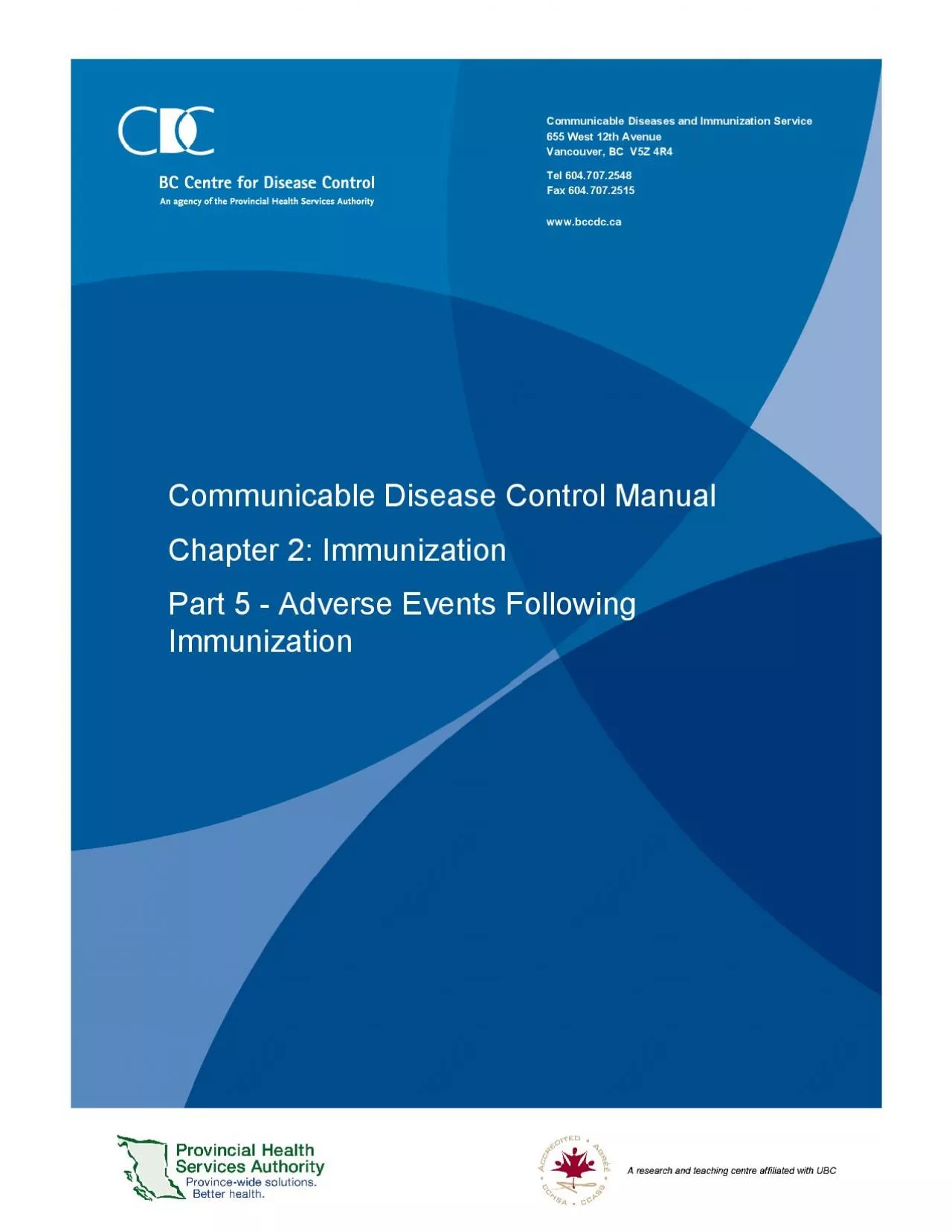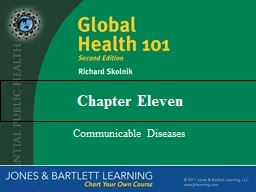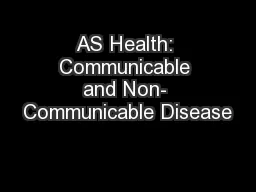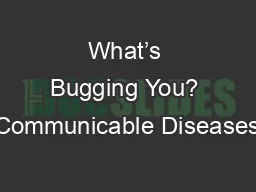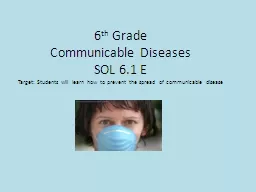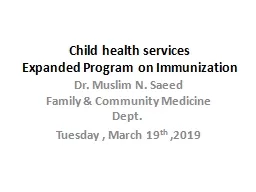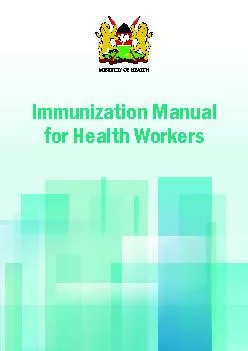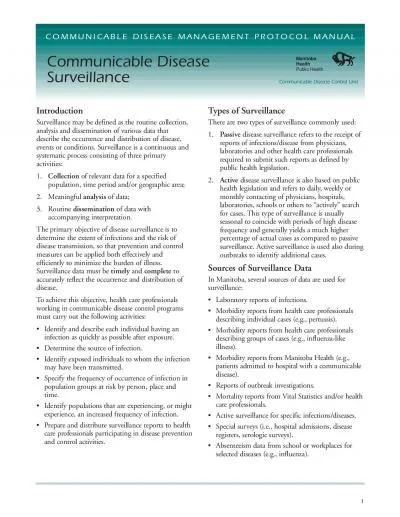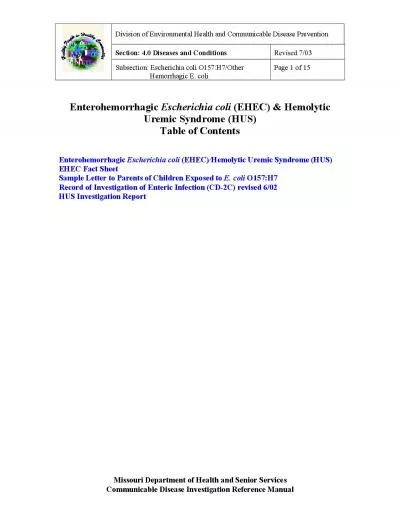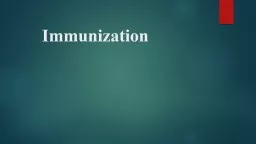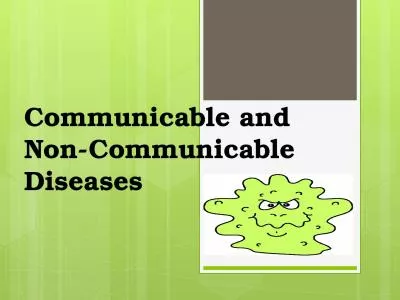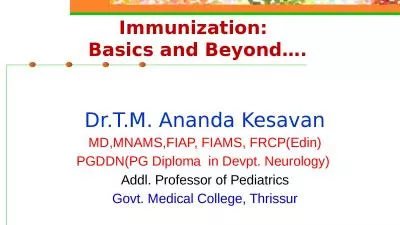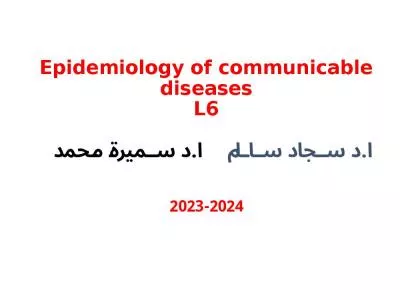PDF-Communicable Diseases and Immunization Service
Author : jade | Published Date : 2021-10-01
655 West 12th AvenueVancouver BC V5Z 4R4Tel 6047072548Fax 6047072515wwwbccdccaCommunicable Disease Control ManualChapter 2 Immunization PartAdverse Events Following
Presentation Embed Code
Download Presentation
Download Presentation The PPT/PDF document "Communicable Diseases and Immunization S..." is the property of its rightful owner. Permission is granted to download and print the materials on this website for personal, non-commercial use only, and to display it on your personal computer provided you do not modify the materials and that you retain all copyright notices contained in the materials. By downloading content from our website, you accept the terms of this agreement.
Communicable Diseases and Immunization Service: Transcript
Download Rules Of Document
"Communicable Diseases and Immunization Service"The content belongs to its owner. You may download and print it for personal use, without modification, and keep all copyright notices. By downloading, you agree to these terms.
Related Documents

